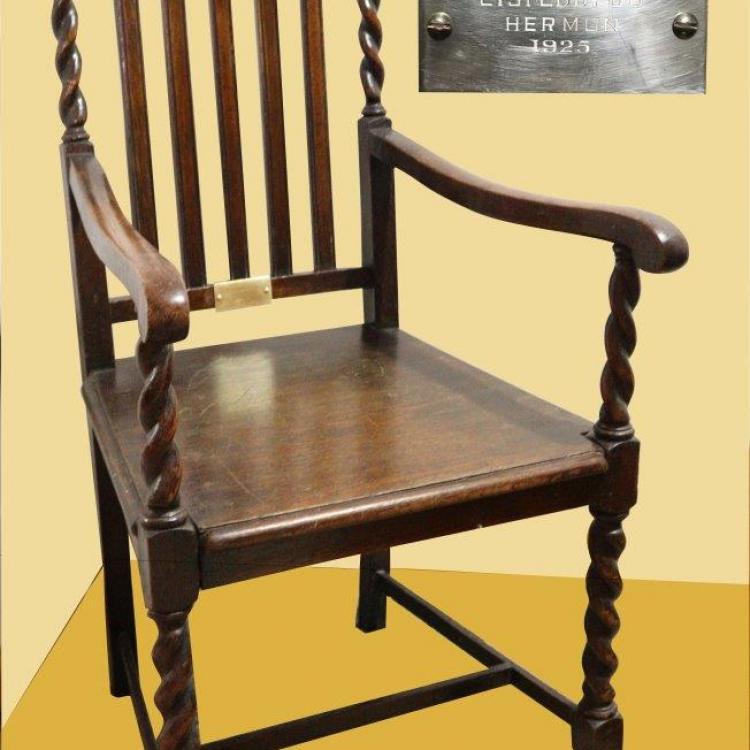Because my father moved to Carmarthenshire to work, my experience of the quarry area were visits to see my grandmother and the family at the base of Moel Tryfan near Rhosgadfan. My father was born in 1917 as one of 12 children and his life as a child revolved around the village, the Old Chapel, and the stories of the quarry and chapel.
When Cors y Bryniau Quarry was at its height at the beginning of the century, my great grandfather owned all the horses that worked in the quarry and was the first to run a brake from Rhosgadfan to Caernarfon but after losing his wife at a young age, he broke his heart, began to live wastefully and his business folded.
My grandfather and two of his sons worked at Cors y Bryniau Quarry. Hundreds worked at Foel Quarry too. The children came home from school and eagerly awaited the sound of the quarry siren at five o'clock. They would then see a crowd coming over the side of the Foel and could hear the sound of an army of hobnail boots approaching. With my grandfather and the boys home, everyone would then enjoy a quarry supper, usually lobscouse.
Sometimes the quarrymen's procession would be slower than usual and a large stretcher bearing a man's body covered with sacks could be seen. Scenes such as these were a part of the experience of every child brought up amidst the harsh life of the quarries.
The cold and icy winter weather was an ordeal for the children of the mountains and during the winter storms of the Moeltryfan area, the smallholdings were covered with snowdrifts.
Popular eisteddfodau were held in Gorffwysfa and Hermon. The big choirs brought the eisteddfod to a close. With my grandfather conducting, the Rhosgadfan choir won at the Hermon eisteddfod in 1925 - see photograph above.
There was no pub or policeman within miles of Rhosgadfan during my father's youth and no policeman was ever needed there. The children and young people had too much respect for the ministers and elders to offend anyone. It is a pity to think that a beautiful chapel such as Hermon, a venue for large gatherings, and Gorffwysfa, have now been demolished.
The summers were long and sunny and their lives as children of the Old Chapel were blissful. They climbed frequently to the top of Mynydd y Foel and played happily on the rocks. The rocks belonged to them. On nice days, they would take sandwiches and milk with them to collect bilberries on Mynydd Grug or Mynydd Mawr. As they got older, they would climb to the top of Moel Eilian. After returning home with the bilberries, my grandmother would bake a tart which was a treat for them as a family.
In the winter of 1926, the quarrymen were on strike and coal was nowhere to be found. It was cold and my father and brother had to miss a lot of school to go to the Wern on the slopes of Betws Garmon to cut wood and carry bundles of it on their shoulders all the way back.
As well as the dark clouds of the coal strike, darker clouds loomed on the horizon, as the slate trade was in decline. In addition to this, the large shed at Cors y Bryniau caught fire and despite the quarrymen's brave attempts at extinguishing the fire, it burnt to the ground and that was the end of the quarry at Cors y Bryniau. Hundreds of experienced craftsmen were put on the dole which marked the beginning of a time of poverty and austerity in the region. Moeltryfan Quarry dragged on working but soon it, too, shut down.

